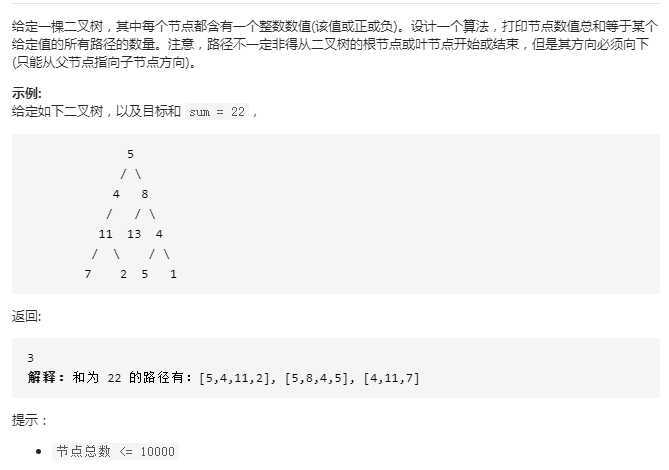
方法一:暴力搜索
class Solution { private int res = 0; public int pathSum(TreeNode root, int sum) { order(root,sum); return res; } public void order(TreeNode root,int sum) { if(root == null) return ; dfs(root,sum); order(root.left,sum); order(root.right,sum); } public void dfs(TreeNode root, int sum) { if(root == null) return; if(sum - root.val == 0) res++; dfs(root.left,sum - root.val); dfs(root.right,sum - root.val); } }
方法二:记录每个节点的前缀和
class Solution { public int pathSum(TreeNode root, int sum) { Map<Integer,Integer> map = new HashMap<>(); // 存放每个节点的前缀和,即之前所有父节点的和 map.put(0,1); // 到根节点的情况 return helper(root, map, sum, 0); } public int helper(TreeNode root, Map<Integer,Integer> map, int sum, int curSum) { if(root == null) return 0; curSum += root.val; int count = map.getOrDefault(curSum-sum,0); // 如果节点a的前缀和为curSum-sum那么节点a到当前节点的和为sum map.put(curSum,map.getOrDefault(curSum,0)+1); // 本层前缀和会影响下一层的判断,进入下一层要加入map count += helper(root.left,map,sum,curSum); count += helper(root.right,map,sum,curSum); map.put(curSum,map.get(curSum)-1); // 本层节点前缀和和上一层的没有关系,返回上一层时要移除掉 return count; } }
原文:https://www.cnblogs.com/yonezu/p/13324770.html